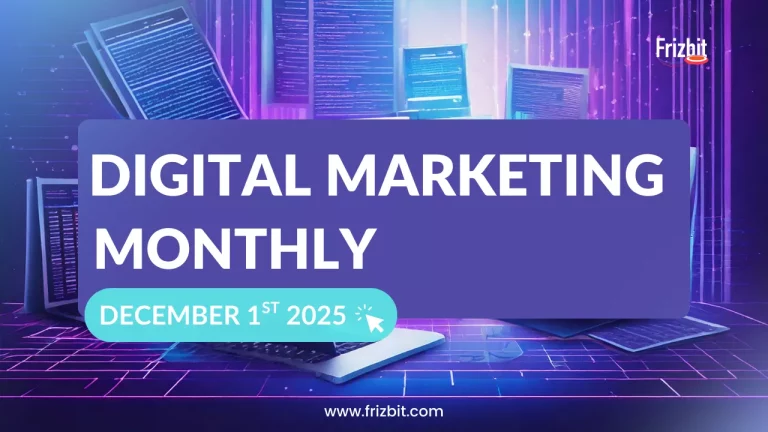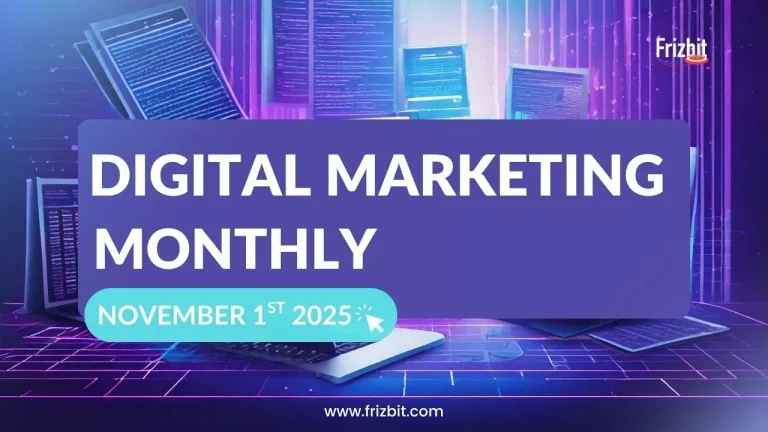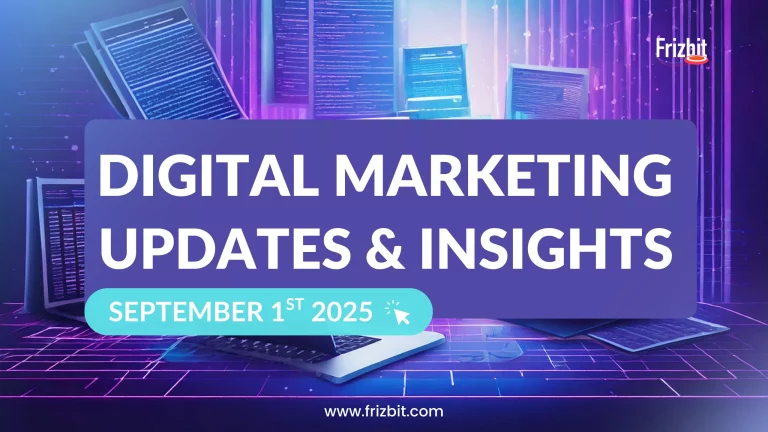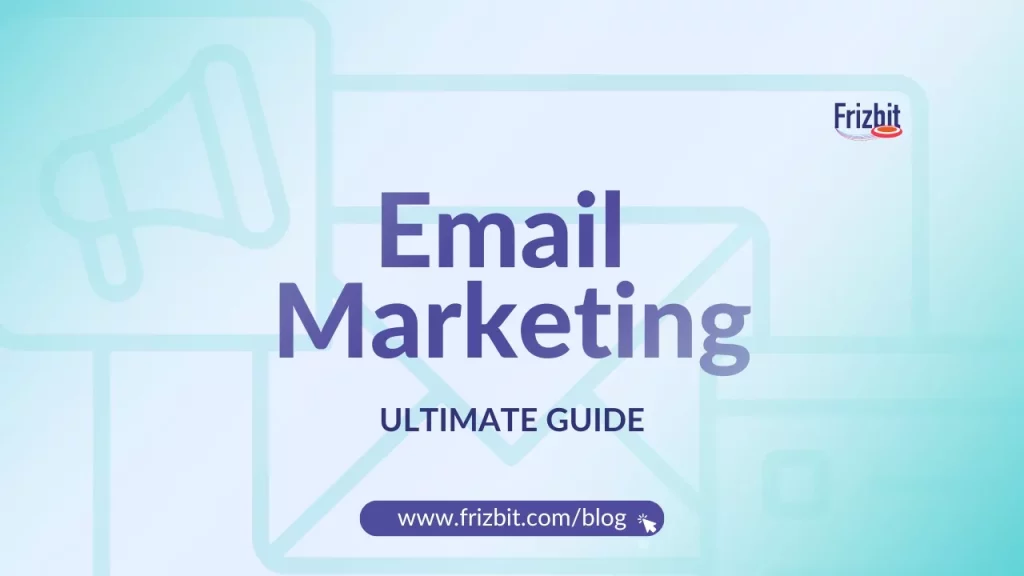
Email marketing is an essential tool for businesses, providing a high return on investment and direct access to your audience. In fact, did you know that the average return on investment for email marketing is an impressive $42 for every $1 spent?
In this ultimate guide, we’ll cover the fundamentals of email marketing, its operational process, and its role in enhancing your inbound strategy.
You’ll learn about the advantages and disadvantages of email marketing, effective strategies to build an email list, and steps to create successful campaigns.
By the end, you’ll have comprehensive knowledge to leverage email marketing effectively and a guidance to select one of the best email marketing service providers for your business.
Without further ado, let’s start with the first question
1. What is Email Marketing?
Email marketing is a direct tool that businesses use to communicate new products, promotions, and updates to a list of subscribers. Since recipients opt in to receive these emails, this method often results in higher conversion rates compared to other marketing channels.
The approach to email marketing has shifted from generic mass emails to tailored, permission-based communications that prioritise segmentation and personalization. By tapping into customer preferences and behaviours, businesses can foster long-term relationships.
2. How Does Email Marketing Work?

Email marketing operates through a systematic process that ensures effective communication and engagement with your audience.
Here’s a step-by-step overview:
- Building an Email List: Collect email addresses through sign-ups, lead magnets, and other methods.
- Create an Email Marketing Campaign: Design emails with compelling content, CTAs, and visuals.
- Segmentation: Divide the email list into targeted groups based on demographics, behaviour, or other criteria.
- Sending Emails: Use email marketing software to distribute emails to the segmented lists.
- Tracking Performance: Monitor metrics like open rates, click-through rates, and conversions to gauge the success of your campaigns.
- Optimisation: Analyse data and make improvements to enhance future campaigns. This might involve A/B testing different elements of your emails.
3. How can email marketing fuel your overall inbound strategy?
Using email marketing fuels your overall inbound strategy as it nurtures leads, drives engagement, and builds customer loyalty. By sending personalised content, businesses can guide prospects through the sales funnel and keep them engaged with relevant information and offers.
Additionally, email campaigns drive traffic to your website, providing further engagement opportunities. Finally, the detailed analytics refine and enhance your overall inbound strategy, ensuring alignment with your audience’s needs and preferences.
4. Advantages and Disadvantages of Email Marketing
Email marketing offers benefits but also presents some challenges. Understanding both the advantages and disadvantages can help you optimise your email marketing strategy for better results.

Advantages:
- High ROI: Email marketing has a high return on investment of 20%.
- Direct Access to Your Audience: Emails go directly to your audience’s inbox, giving you a direct line of communication.
- Personalisation: Emails can be personalised to cater to individual preferences, increasing engagement rates.
- Measurable: Email campaigns provide measurable data, allowing you to track performance and make data-driven decisions.
Disadvantages:
- Spam: Many users receive a high volume of emails, making it difficult to stand out.
- Deliverability Issues: Emails can end up in spam folders if not properly optimised.
- Unsubscribes: Poorly executed campaigns can lead to high unsubscribe rates.
- Time-Consuming: Crafting and managing effective email campaigns can be time-consuming.
5. How to Build your Email Marketing List
Following, you will find a table of some strategies to gather email addresses
| Strategy | Description |
|---|---|
| Create Opt-In Forms | Place user-friendly sign-up forms on your website, blog, and landing pages. |
| Lead magnets | Encourage sign-ups with incentives like eBooks, discounts, or exclusive content. |
| Social Media | Promote your email list on social media and offer incentives. |
| Webinars and Events | Collect emails from participants who sign up for your events. |
| Contests and Giveaways | Require email addresses for entry. |
| Collaborate with Partners | Work with other businesses or influencers. |
| Content Upgrades | Provide extra valuable content in exchange for email addresses. |
6. Ethical Practices for Building Email Lists
Building an email list ethically will build trust with your audience and ensuring the long-term success of your email marketing efforts.
- Clear Opt-In Forms: Make sure your sign-up forms clearly explain what subscribers are signing up for and how often they will receive emails from you.
- Double Opt-In: Implement a double opt-in process, where subscribers confirm their subscription via email. This helps verify the authenticity of the email addresses and reduces the likelihood of spam complaints.
- Privacy: Clearly communicate your privacy policy and assure subscribers that their data will be kept secure and not shared with third parties without consent.
- Easy Unsubscribe Process: Make it simple for subscribers to opt out of your email list. Include an unsubscribe link in every email, and promptly remove anyone who requests to be unsubscribed.
7. How to Start Email Marketing
Starting an email marketing campaign involves several key steps that lay the foundation for your success. First, it’s essential to define your target audience clearly. Who are they? What are their interests? Understanding these aspects will help tailor your messaging to meet their needs.
Next, choose the right email marketing tools. Platforms like Frizbit offers features that can help you segment your audience and create personalised content. These tools also provide templates that make it easier to design engaging emails without needing extensive technical knowledge.
A crucial part of this process is creating a detailed email marketing plan. This plan should outline your objectives, the type of content you will send, and the frequency of your emails. It’s important to schedule your emails strategically, considering factors such as the best days and times for sending, which may vary depending on your audience’s habits.
Finally, ensure you have a process in place to track the performance of your emails. This includes monitoring open rates, click-through rates, and conversions to continuously improve your campaigns.
To ensure efficiency and effectiveness, leverage advanced tools like marketing automation to streamline your email marketing efforts, enabling you to focus on creating high-quality content.
8. How to create an Email Marketing Campaign

Crafting an email campaign can feel like a daunting task, but with the right approach, it becomes a manageable and even enjoyable process. That’s why we’ve developed a step-by-step process designed to help you create a campaign that not only reaches your audience but also resonates with them.
Additionally, we recommend exploring email marketing examples from top brands to draw inspiration. Observing how industry leaders approach copy and design can provide valuable insights and spark ideas for your own campaigns.
1. Define Your Goals
Determine what you want to achieve with your email campaign (e.g., increase sales, drive website traffic, promote a new product, etc.).
Smart Tip: When determining what you want to achieve with your email campaign, you can use Google Trends to gain insights into current market interests and consumer behaviour.
2. Build Your Email List
Collect email addresses from customers and prospects through various opt-in methods, such as sign-up forms, incentives, and events, to drive engagement and sales.
3. Choose an Email Marketing Platform
When selecting a platform, it’s important to choose the right software for email marketing that fits your needs. These platforms offer tools for creating, sending, and tracking emails.
4. Create Engaging Content

- Subject Line: Craft a compelling subject line that grabs attention and encourages opens.
- Body Content: Write clear, concise, and valuable content that aligns with your goals and audience interests.
- Call to Action (CTA): Include a strong CTA that guides recipients on what to do next (e.g., “Shop Now,” “Learn More”)
5. Design Your Email
- Use templates provided by your email marketing platform or design your own to ensure your email looks professional.
- Make sure your email is mobile-friendly, since many users read emails on their mobile devices.
- Include images, videos, and other multimedia elements to make your email visually appealing.
6. Personalise Your Emails
Use the recipient’s name and tailor the content based on their preferences and past behaviour to make the email more relevant.
7. Set Up Automation
Learn how to automate emails by setting up sequences that send messages at the optimal time, such as welcome emails, follow-ups, or cart abandonment emails.
8. Test Your Emails
- Conduct A/B testing on different elements like subject lines, email content, and CTAs to see what performs best.
- Test your email across different devices and email clients to ensure it displays correctly.
9. Send Your Campaign
Schedule your emails to reach recipients at the optimal time.
10. Monitor and Analyse Results
Track key metrics such as open rates, click-through rates, conversion rates, and unsubscribe rates.
9. How to Do Email Marketing
Executing an effective email marketing campaign requires careful attention to detail and a focus on delivering value to your audience. Start by crafting compelling subject lines that grab attention—this is crucial, as it directly impacts whether your email will be opened. Aim for subject lines that are concise, clear, and possibly include personalization, such as the recipient’s name or location.
Once your audience is engaged, the content of your emails should maintain their interest. Break up your text with short paragraphs, bullet points, and relevant images. Make sure each email has a clear call-to-action (CTA), guiding your readers on what to do next, whether it’s clicking a link, making a purchase, or downloading a resource.
To maximise the benefits of email marketing campaigns, incorporate data-driven insights. Segment your email list based on user behavior and preferences to ensure each subscriber receives content that resonates with them. This not only increases engagement but also fosters stronger customer relationships, leading to higher conversion rates.
By implementing hyper-personalization, you can tailor your email content to the specific preferences and behaviors of individual subscribers, greatly enhancing the relevance and impact of your campaigns.
Remember to test your emails before sending them out. A/B testing different elements, like subject lines or CTAs, can provide valuable insights into what works best for your audience. Finally, monitor your campaign’s performance and be ready to make adjustments as needed. The ability to adapt quickly based on feedback and results is key to long-term success in email marketing.
10. Email Marketing Campaigns: Best Practices
To maximise the effectiveness of your email marketing campaing efforts, you should employ a variety of best practices that ensure your campaigns are engaging, targeted, and optimised for success.
Below are some key strategies to help you achieve the best results:
- Opt-In Signup Forms: Ensure subscribers genuinely want your emails by making sign-up easy and clear.
- Segmentation and Targeting: Improve engagement by sending targeted content to different subscriber groups based on demographics and behaviour.
- A/B Testing: Test different email elements like subject lines and CTAs to see what works best.
- Timing and Frequency: Use a reputable service, authenticate emails, and avoid spammy language to ensure inbox delivery.
- Mobile Optimization: Ensure your emails are mobile-friendly to cater to the growing number of users accessing emails on their smartphones.
- Subject Line: Craft compelling subject lines to increase open rates and grab the recipient’s attention.
- Personalise Your Marketing Emails: Increase relevance with personalised content using the recipient’s name and past interactions.
- Measure Success with Metrics: Track open rates, clicks, and conversions to understand and improve performance.
11. Measure the Effectiveness of Your Email Marketing Campaigns
It is important to keep track of key performance metrics to gain valuable insights into what works and what needs improvement.
You will use the following KPIs to track your progress
Open Rate
The percentage of recipients who open your email. A higher open rate indicates effective subject lines and sender reputation.
Click-Through Rate
The percentage of recipients who click on links within your email. It measures the effectiveness of your content and CTAs.
Churn Rate
The percentage of recipients who opt-out from your email list. A high unsubscribe rate may indicate issues with email frequency or relevance.
Complaint Rate:
The percentage of recipients who mark your email as spam. A low complaint rate is crucial for maintaining deliverability.
Conversion Rate
The percentage of recipients who complete a desired action, such as making a purchase or filling out a form. This is a key metric for measuring ROI.
Bounce Rate
The percentage of emails that could not be delivered. High bounce rates can harm your sender reputation and affect deliverability.
12. Types of email marketing campaigns
Email marketing encompasses various types, each serving distinct purposes to engage, inform, and convert recipients.
1.Welcome Emails
Regularly scheduled emails providing news, updates, and valuable content related to the business.
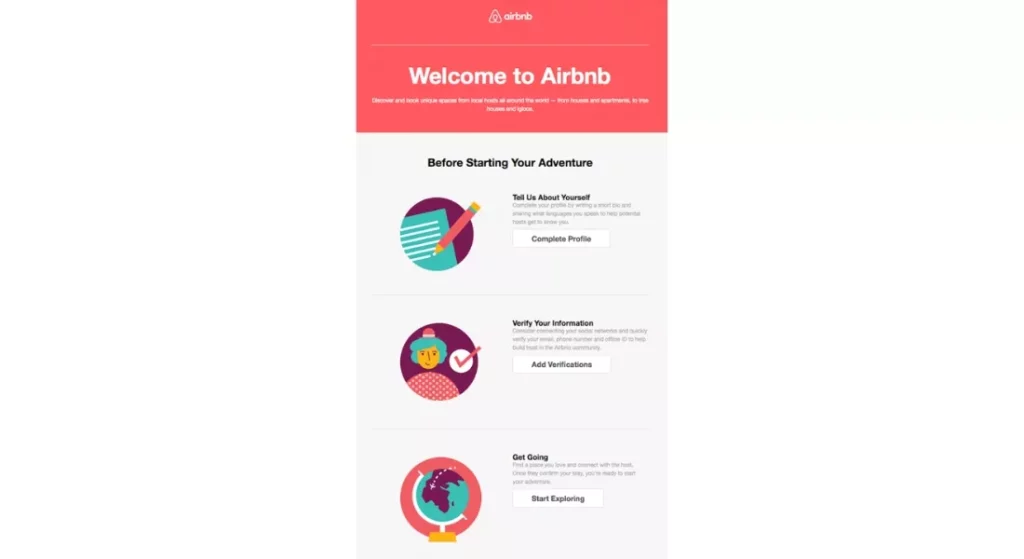
2.Transactional Emails
Triggered by specific actions such as purchase confirmations or shipping notifications.
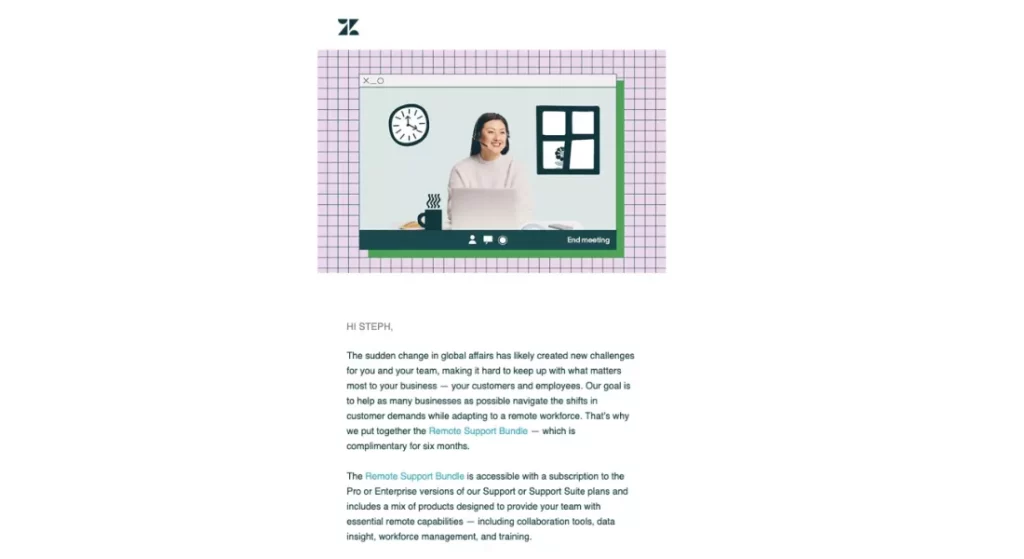
3.Promotional Emails
Emails sent to promote special offers, discounts, or sales events.
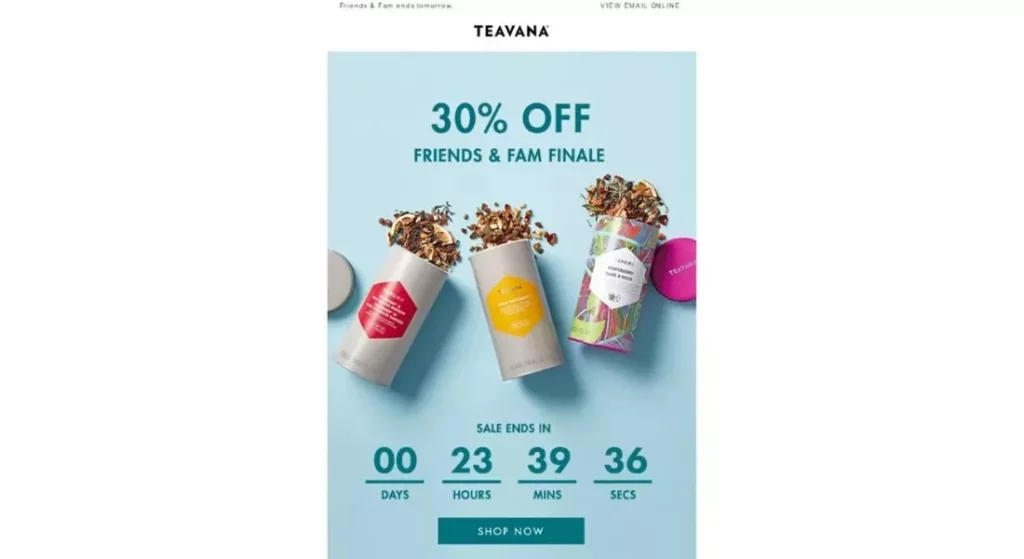
4. Lead Nurturing Emails
Guide prospects through the sales funnel with relevant content
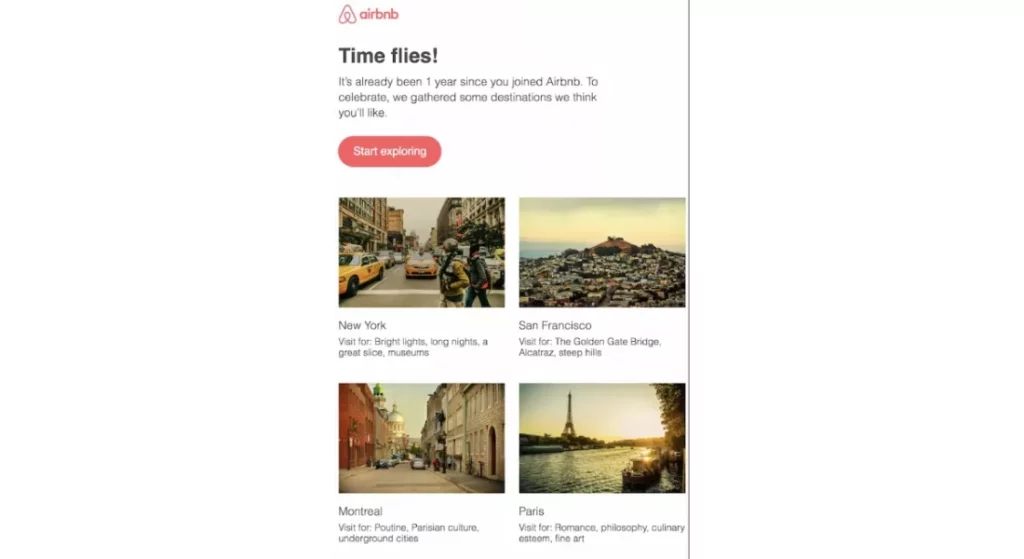
5. Cart Abandonment Emails
Abandoned cart emails are sent to those users some time (usually 30 mins to 2 hours) after they leave the site with a message inviting them to go back and finish the purchase
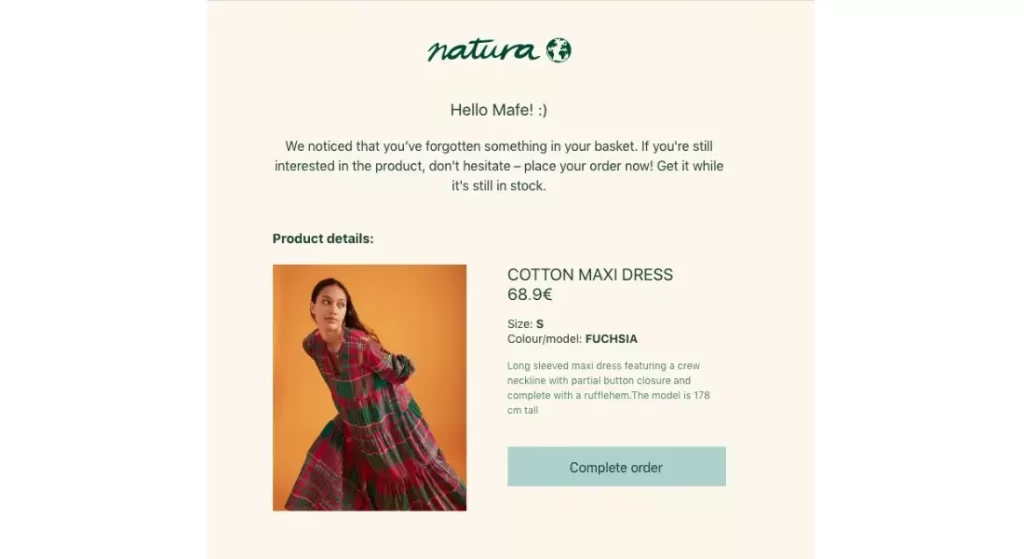
Additional types of email marketing that can be used in your strategies include:
- Newsletter Emails: Regularly scheduled emails providing news, updates, and valuable content related to the business. Newsletters help maintain consistent communication with your audience, keeping them informed and engaged with your brand.
- Behavioural Emails: Based on the recipient’s behaviour, such as browsing history or past purchases, these emails personalise content to match user actions and preferences.
- Triggered Emails: Automatically sent based on specific triggers or actions taken by the subscriber, these emails respond to user interactions in real-time, providing timely and relevant information.
- Seasonal Emails: Focused on holidays or special events, these emails feature themed content or promotions, capitalizing on seasonal interest and boosting engagement.
- Survey/Feedback Emails: These solicit feedback from customers about their experiences with your brand or products, gathering valuable insights to improve your offerings and customer satisfaction.
13. Email marketing software platforms
This comparison table provides key insights into the benefits, pricing, and target market of the best email marketing software platforms, helping you choose the right tool for your business needs.
| Platform | Benefits | Pricing | Target Market |
| Frizbit | Hyper-Personalization, unlimited automation, user-friendly interface, dynamic fields, cross-platform compatibility, A/B/X testing, design and preview emails | $99 for every 10.,000 emails sent | All-size eCommerce |
| Drip | Ecommerce-specific triggers, on-site campaigns, all features included in all plans | $699/month for up to 50.000 contacts | All-size eCommerce |
| Klaviyo | A/B testing, user-friendly interface, drag-and-drop editor, industry benchmark data, built-in CDP | $45 for 15.000 emails/month | All-size eCommerce |
| ActiveCampaign | Pre-built automation templates, contact management, extensive features suite | $49/month for 1.000 marketing contacts | Small to mid-sized |
| Brevo (Sendinblue) | Conditional content blocks, eCommerce dashboard, multi-channel campaigns | €255 for 100.000 emails | Small to medium-sized |
| Omnisend | Ecommerce-focused, free plan with advanced features, segmentation, multi-channel messaging | Standard ($16/month) | All-size eCommerce |
| Campaigner | Feature-rich, eCommerce integration, 24/7 customer support | Starter ($59/month) | Small to medium-sized |
| GetResponse | Basic features’ suite, eCommerce integration, webinars, AI tools, segmentation, RSS feed | $13.1/month tailored plan | Small to medium-sized |
| MailerLite | Free plan, paid subscriptions option, segmentation, flexible billing, customer support | Free: 12.000 emails/month for 1.000 users | Small to medium-sized |
14. Compliance and Legal Consideration for Email Marketing
Compliance and legal considerations will ensure that your campaigns are lawful and protect subscriber privacy.
CAN-SPAM Act (USA).
This law requires providing a clear way for recipients to opt out, including your physical mailing address, and avoiding misleading subject lines and headers.
General Data Protection Regulation (GDPR)
For European subscribers it mandates explicit consent for data collection, the right to access and delete personal data, and prompt notification of any data breaches.
Additionally, your privacy policy should be clearly stated, easily accessible, and written in plain language to inform subscribers how their data will be used.
Finally, employ email authentication methods such as SPF, DKIM, and DMARC to safeguard against email spoofing and phishing, thereby improving email deliverability.
15. Future Trends in Email Marketing
Email marketing is rapidly evolving, with emerging trends set to transform how businesses engage with their audience.
- AI and machine learning will enhance personalization, optimise send times, and predict subscriber behaviour, while interactive emails featuring embedded surveys, quizzes, and shoppable content will boost engagement.
- Hyper-personalisation, using advanced automation tools, will streamline workflows, sending timely, relevant messages based on subscriber actions without manual intervention.
- Optimizing email content for voice assistants like Alexa and Siri will become crucial, ensuring accessibility and enhancing user experience.
Staying informed about these trends will help businesses innovate and improve their email marketing strategies, aligning with evolving consumer expectations.
16. Conclusion
Email marketing is a powerful tool that, when used correctly, can drive significant results for your business. By building a strong email list, crafting engaging content, and using segmentation and automation, you can create effective email campaigns that resonate with your audience and drive growth. Implement these strategies and best practices to maximise the effectiveness of your email marketing efforts and achieve your business goals.
Email Marketing FAQ
What are the 7 email marketing strategies?
The 7 email marketing strategies include segmentation, personalization, automation, optimization, mobile responsiveness, interactive content, and analytics to enhance overall campaign effectiveness
What are the 5 steps of email marketing?
5 steps towards a successful email marketing campaign are:
- Define your goals and target audience.
- Build and maintain a quality mailing list.
- Personalization and automation.
- Optimise for mobile devices.
- Measure and analyse results.
What are the 5 C’s of email?
Be Clear about your message, be Cohesive by staying on-topic, Complete your idea with supporting content, be Concise by eliminating unnecessary words, be Concrete by using precise words.
Is email marketing easy?
Email marketing isn’t particularly difficult to learn, but your success will depend on how motivated you are and how much time you can spend studying. Email marketing relies on building an email list, creating compelling emails, and sending them out to the list via an email service provider
How to run an email campaign?
To create a successful email marketing campaign, choose a relevant email list, design engaging emails, personalise subject lines and content, be conversational, create follow-ups, send emails from a real person, A/B test your emails, and follow email or spam regulations.

